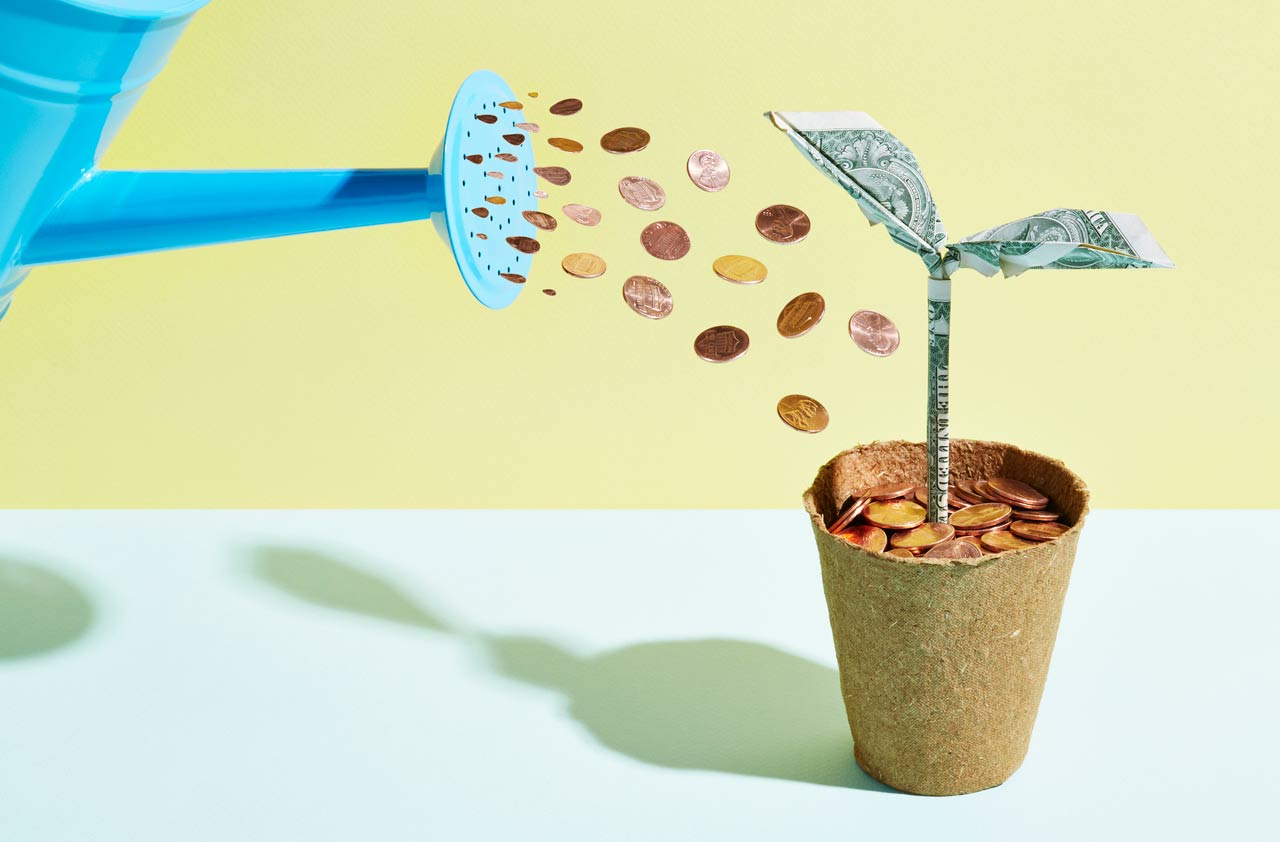What's Going on with Bonds During the Coronavirus?
To understand, you need to know a few bond basics. Here's a primer on how bonds work, and how disruptive events like the coronavirus and falling interest rates can affect their performance.


If you’re like most investors, you’ve probably been unnerved by the coronavirus-fear-driven gyrations in the markets. But while most commentators focused on stocks, much less ink and bytes were spent on the reaction of the bond market, which, more often than not, was summarized with head-scratching phrases like “bond yields fell today.”
If you’re not well-versed in bonds and other fixed income investments (and few investors are) such cryptic language may have led you to believe that investors were bailing out on bonds at the same time they were shedding stocks.
Actually, the opposite was occurring.
From just $107.88 $24.99 for Kiplinger Personal Finance
Become a smarter, better informed investor. Subscribe from just $107.88 $24.99, plus get up to 4 Special Issues

Sign up for Kiplinger’s Free Newsletters
Profit and prosper with the best of expert advice on investing, taxes, retirement, personal finance and more - straight to your e-mail.
Profit and prosper with the best of expert advice - straight to your e-mail.
Perplexed? You’re not alone. Unlike stocks, whose performance can be easily understood in terms of rising and falling prices, bonds employ a complex mix of characteristics — such as yields, coupon rates, par values and maturities — whose descriptions and interactions often seem confusing and counterintuitive.
Even if you do have bonds or bond funds in your portfolio, you still may not understand what phrases such as “falling yields” and “rising interest rates” say about the state of the bond market. Or whether this affects you (or not).
So, here’s a little refresher course on how the bond market works.
Bonds 101
Bonds are essentially IOUs. The issuer — a company, a state government or the federal government — agrees to pay you a certain interest rate (coupon rate) based on the face value (also known as par value) of the bond over a certain time frame (the maturity).
Here’s an example. Say you buy a bond at its par value of $10,000, and it has a coupon rate of 3% and a maturity of 10 years. As long as you don’t sell it, you’ll receive an annual income payment of $300 every year, usually paid semi-annually, until the bond matures, at which time the par value will be returned to you.
Sounds simple, right? But here’s the thing: Very few people buy a bond at par value. Or when it’s first issued.
Like stocks, bond prices rise and fall with demand. Using the example above, say that $10,000 bond you have your eye on is trading at a higher price — also called a premium — of $11,000. If you buy it, you’re still getting paid $300 a year, but this lowers your actual interest rate — or yield — to 2.7%. You calculate yield by dividing the annual payment by the price you paid for the bond. In this case, $300/$11,000=2.7%.
Conversely, if you bought that same bond at a discounted price of $9,000, its yield would be 3.3% ($300/$9,000).
Whose yields are pundits pontificating about?
If you understand that yields go up as prices go down (and vice versa), it’s easier to grasp what’s happening in the bond market. When commentators say that “yields are falling” this means bond prices are rising.
But which bonds are they talking about? Generally, U.S. Treasury securities.
Why Treasuries?
Because U.S. Treasury securities are the safest investments in the world, backed by the full faith and credit of the U.S. government. When Treasury yields fall, this often means that investors are buying them as safe havens for their capital, even if they must pay premiums that reduce their yield.
How do interest rates fit in?
You’ll often hear bond market commentators talk about rising or falling interest rates. They’re usually referring to newly issued Treasury securities.
Coupon rates for new Treasuries reflect the current thinking of the Federal Reserve. When the Fed says it’s raising or lowering short-term interest rates, it’s specifically referring to the federal funds rate. This is the interest rate large banks charge each other for overnight loans. Coupon rates for new Treasuries reflect changes in the federal funds rate.
Why does this matter? Because when the Fed raises interest rates, newly issued Treasuries with higher coupon rates will be more attractive than existing Treasuries with lower coupon rates.
Over the past decade, the Fed has kept interest rates very low to keep the economy growing. While this is good news for borrowers, it’s not such good news for investors seeking decent returns from Treasuries.
The news gets even worse when the Fed cuts interest rates. When this happens, new Treasuries are issued with even lower coupon rates.
This makes existing Treasuries with higher coupon rates more attractive. As investors buy them, prices go up (and yields go down), and suddenly you hear commentators flouting a “bond market rally.”
Market corrections and bond market rallies
Under normal conditions, bond investors are usually very picky about yields. The exception usually occurs during stock market sell-offs. Then, scared investors often rush to Treasuries — regardless of their coupon rates — because of their relative safety.
We’re seeing this happen right now. Since the stock market freefall began in February in response to fears of the impact of the coronavirus and collapsing oil prices, the Fed has cut interest rates to nearly 0% to keep money flowing into the economy. As a result, Treasury yields have fallen, and prices have risen due to increasing demand. That’s why when you look at stock and bond index tickers during bad market days, you’ll often see that Treasury yields are in the red as well.
Do rising and falling yields affect bonds you already own?
If you have no intention of selling a bond you can relax. The yield you receive is locked in the moment you buy the bond. It doesn’t matter if its price rises or falls. Unless the issuer defaults on payments or decides to redeem the bond before it matures (also known as “calling”), you’ll still receive the same amount of annual income until it matures. At that time, you’ll get repaid the par value of the bond. Of course, if you bought a bond at a premium, you’ll get back less than what you paid for it (and vice versa). But that’s an entirely different discussion.
There are many factors other than prices, yields and maturities that investors need to consider when evaluating individual bonds. If you don’t feel comfortable conducting this research on your own, you may be better off working with a financial adviser to select the appropriate fixed income investments for your portfolio.
Disclosure: Certain sections of this article contain assumptions about the behavior of the stock and bond markets. These assumptions should not be construed as guarantees of future performance. Past performance is not indicative of future results. Because investment returns and principal values fluctuate, shares of any stock or bond may be worth more or less than their original value. Some investments are not suitable for all investors, and there is no guarantee that any investing goal will be met. Talk to your financial adviser before making any investing decisions.
Profit and prosper with the best of Kiplinger's advice on investing, taxes, retirement, personal finance and much more. Delivered daily. Enter your email in the box and click Sign Me Up.

Dan Flanagan brings more than 25 years of financial planning, wealth management and accounting experience to his role as partner and financial adviser at Canby Financial Advisors. His investment, financial planning and tax experience has great appeal among the entrepreneurs and executives who are his typical clients.
Securities and advisory services offered through Commonwealth Financial Network®, Member FINRA/SIPC, a Registered Investment Adviser.
-
 My Retirement Learning Curve, 1 Year In
My Retirement Learning Curve, 1 Year InA retiree checks in with what they wish they knew early on and what they've changed about their plan one year in.
-
 Introducing Your CD's Edgier Cousin: The Market-Linked CD
Introducing Your CD's Edgier Cousin: The Market-Linked CDTraditional CDs are a safe option for savers, but they don't always beat inflation. Should you try their counterparts, market-linked CDs, for better returns?
-
 'Humbug!' Say Consumers, Despite Hot GDP: Stock Market Today
'Humbug!' Say Consumers, Despite Hot GDP: Stock Market Today"The stock market is not the economy," they say, but both things are up. Yet one survey says people are still feeling down in the middle of this complex season.
-
 Introducing Your CD's Edgier Cousin: The Market-Linked CD
Introducing Your CD's Edgier Cousin: The Market-Linked CDTraditional CDs are a safe option for savers, but they don't always beat inflation. Should you try their counterparts, market-linked CDs, for better returns?
-
 How to Protect Yourself and Others From a Troubled Adult Child: A Lesson from Real Life
How to Protect Yourself and Others From a Troubled Adult Child: A Lesson from Real LifeThis case of a violent adult son whose parents are in denial is an example of the extreme risks some parents face if they neglect essential safety precautions.
-
 To Build Client Relationships That Last, Embrace Simplicity
To Build Client Relationships That Last, Embrace SimplicityAs more automation becomes the norm, you can distinguish yourself as a financial professional by using technology wisely and prioritizing personal touches.
-
 Client Demand Is Forcing Financial Advisers to Specialize: How to Deliver
Client Demand Is Forcing Financial Advisers to Specialize: How to DeliverThe complexity of wealthy clients' needs — combined with AI and consumer demand — suggests the future of financial planning belongs to specialized experts.
-
 A Financial Planner Takes a Deep Dive Into How Charitable Trusts Benefit You and Your Favorite Charities
A Financial Planner Takes a Deep Dive Into How Charitable Trusts Benefit You and Your Favorite CharitiesThese dual-purpose tools let affluent families combine philanthropic goals with advanced tax planning to generate income, reduce estate taxes and preserve wealth.
-
 A 5-Step Plan for Parents of Children With Special Needs, From a Financial Planner
A 5-Step Plan for Parents of Children With Special Needs, From a Financial PlannerGuidance to help ensure your child's needs are supported now and in the future – while protecting your own financial well-being.
-
 How Financial Advisers Can Best Help Widowed and Divorced Women
How Financial Advisers Can Best Help Widowed and Divorced WomenApproaching conversations with empathy and compassion is key to helping them find clarity and confidence and take control of their financial futures.
-
 A Wealth Adviser Explains: 4 Times I'd Give the Green Light for a Roth Conversion (and 4 Times I'd Say It's a No-Go)
A Wealth Adviser Explains: 4 Times I'd Give the Green Light for a Roth Conversion (and 4 Times I'd Say It's a No-Go)Roth conversions should never be done on a whim — they're a product of careful timing and long-term tax considerations. So how can you tell whether to go ahead?